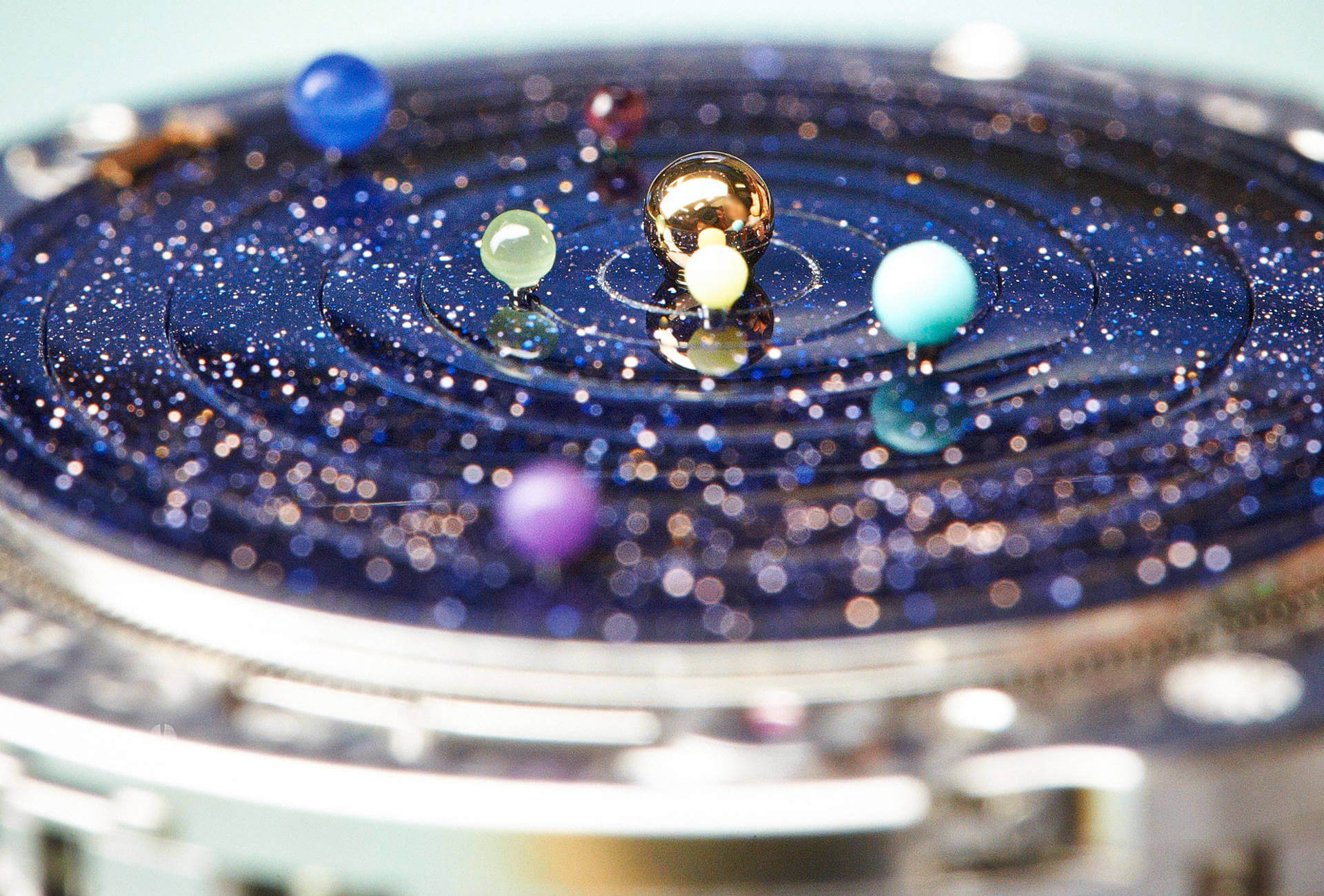“Look, treasure!” Scooping a pearly shell from the seabed is a holiday ritual we all enjoy. Since Ancient times, this opalescence, or iridescence as it’s also known, has inspired the creation of all manner of objects from the mundane to the marvellous. Buttons, dominos, furniture, fans, pen stands, opera glasses, belt buckles, letter openers… mother-of-pearl is a craftsman’s joy; suffice to see the collections held by the Musée de la Nacre et de la Tabletterie in Méru, a French town once renowned for its mother-of-pearl marquetry.
Opal offers a precious alternative to mother-of-pearl, while a technique borrowed from Venetian master-glassmakers in the Middle Ages, perfected by a Frenchman in the early seventeenth century, enables horn and fish scales to be transformed into an ersatz mother-of-pearl (Dictionnaire Encyclopédique Quillet, 1975). Today, pigments incorporating artificial mother-of-pearl are added to the paint on certain top-of-the-range cars, as well as to nail varnish, body lotions, even rich and creamy shampoo! And that’s not all: insects can also display this characteristic iridescence – think of a butterfly’s shimmering wings.
From white to black, mother-of-pearl runs the gamut of colours – with a special mention for Tahitian black mother-of-pearl.
Natural or artificial, now sourced mainly from Asia, Australia and Polynesia, mother-of-pearl is an organic substance that is secreted by certain mollusks. It comprises thin layers of conchiolin with microscopic crystals of aragonite or calcite in a conchoidal arrangement – a structure which, incidentally, has inspired a new type of super-resistant ceramic (CRNS, 2014). It is deposited on the shell’s inner surface, and will also cover a foreign body, such as a grain of sand, that is accidentally or deliberately introduced into the shell… to form a pearl. Indeed, the watch industry often uses mother-of-pearl taken from shells that were used to produce cultured pearls. Like its gem companion, mother-of-pearl is classed according to its rarity, colour and other properties. The highest quality, Grade A, is the one most frequently used for luxury watches and requires a flawless surface, high lustre and thick nacre.
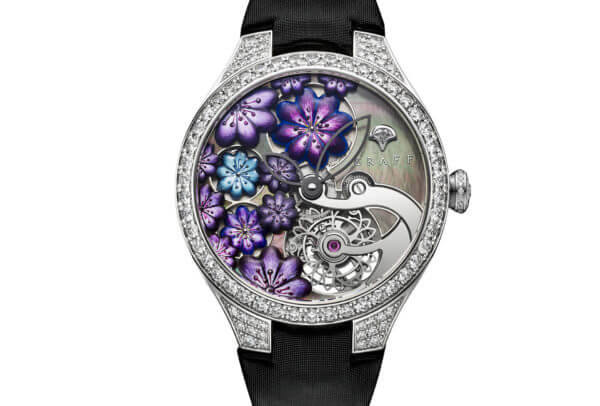
A coat of many colours
From white to black, mother-of-pearl runs the gamut of colours – with a special mention for Tahitian black mother-of-pearl. However, “natural colours are never uniform and the structure insufficiently marked, hence they are rarely used in watchmaking,” explains Nicolas Sestito, CEO of Graff which this year introduced the Floral Tourbillon with a mother-of-pearl dial. Graff works with a rare variety of mother-of-pearl whose characteristic iridescence is a consequence of its structure, and specifically Premium quality with light-to-medium iridescence. “Our coloured dials are white mother-of-pearl which has been tinted underneath, then mirror-polished to reveal its lustre and natural structure.” This is a delicate process: “Mother-of-pearl must be a minimum of 0.4 mm thick if it is to retain its properties and be sufficiently resistant,” cautions Nicolas Sestito. “Anything less, and the risk of breakage becomes too high.” At Carl F. Bucherer, the Manero Peripheral sports a chestnut-brown dial achieved by painting under transparent white mother-of-pearl. For its Open Heart watches, Rado shaves mother-of-pearl down to 0.2 mm, then fixes it to a 0.4-mm brass base. Also transparent, the mother-of-pearl is painted with different colours for the different versions.
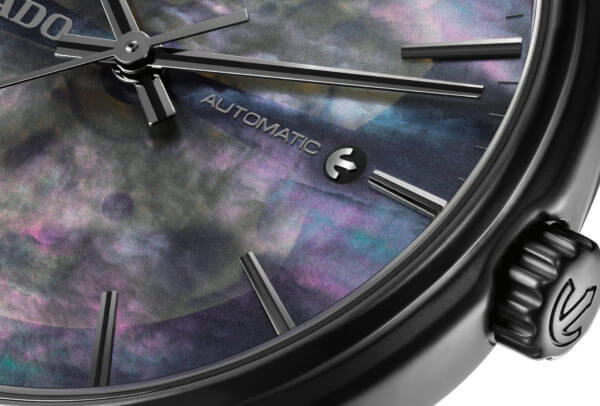
An artist's delight
“Mother-of-pearl can be engraved on its surface to create relief or textures. It can also be painted to further accentuate a design,” explains Olivier Vaucher, who is at the head of the eponymous engraving studio in Geneva. “Shells and mother-of-pearl offer a huge variety of colours. A shell can be brown on the outside, and display a wonderful violet colour underneath. Transparency is one way to influence colour. The fact this is an organic material means each finished piece is unique.” Most of us will be familiar with shell engraving, with or without iridescence, in the form of cameos. The engraver plays on the natural colours that appear through the different layers of the shell, or a stone such as onyx, to produce motifs such as an ivory profile on an orange ground.
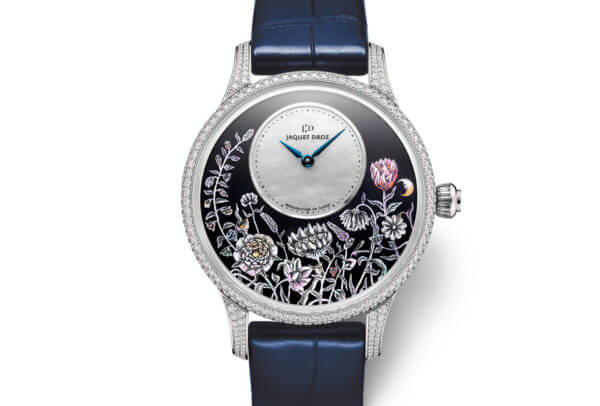
For its Petite Heure Minute Thousand Year Lights, Jaquet Droz applies a technique originating in Asia, in which mother-of-pearl inlay is applied to black lacquer on jewellery boxes. For the dial of this watch, the floral design in white mother-of-pearl is covered in black lacquer. The entire surface is then polished to reveal the pattern underneath. Following this, each individual flower is hand-engraved and highlighted with delicate touches of colour.
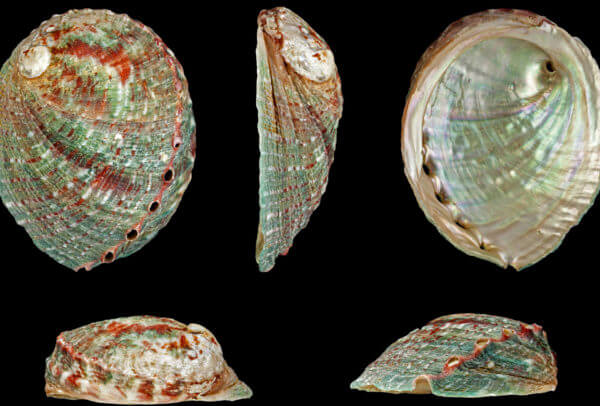
No animals were harmed…?
What restrictions, if any, govern the use of mother-of-pearl? What does the Convention on International Trade in Endangered Species of Wild Fauna and Flora (CITES) have to say? Stefan Kunfermann, spokesperson for the Swiss Federal Office for Food Safety and Veterinary Affairs, assures us that “the watch industry only uses mother-of-pearl from non-protected species. We have no data regarding species that do not require authorisation. In fact there are no protected species of mother-of-pearl. The only CITES regulations apply to Strombus gigas or queen conch shells, which are traded for their flesh and for pearls, and Tridacna or giant clams which have no shiny mother-of-pearl and are imported as decorative objects.”
This notwithstanding, the International Union for Conservation of Nature has added Haliotis or abalone, a shell that produces highly iridescent mother-of-pearl, to its list of endangered species. While it would appear abalone is not used in watchmaking, shells imported from Asia are commonly sold as seaside souvenirs.














